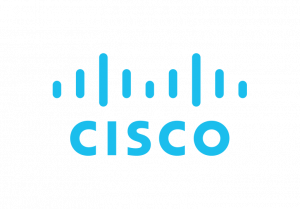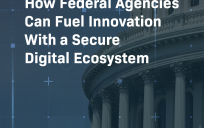When organizations are agile, they’re able to respond quickly and effectively to business threats and opportunities. Who wouldn’t want that?
Every organization seeks to be fluid in their market space. But while government agencies often operate quite differently from the private sector, they can follow the same industry best practices for adaptability and responsiveness.
“The goal for agencies is to enable digital business agility,” said Grimt Habtemariam, Market Strategy Leader for Cisco’s U.S. Public Sector. Cisco delivers data and network solutions that streamline government operations by connecting people, data, processes and things.
But as the saying goes, “nothing good comes easy,” and agility is not some on/off switch. For government agencies to get there, they need to lay the groundwork.
GovLoop interviewed Habtemariam about what that looks like in the public sector and the steps agencies should take. Before becoming agile, agencies first need the data and network to support their enterprise.
1. Prioritize data and identify sources.
A few years ago, federal agencies were ordered to leverage data “as a strategic asset,” and there have been tremendous gains since. The Federal Data Strategy now guides agencies’ data governance and efforts, and state chief data officers have formed their own network.
These strategies and operational groups exist for good reason, but they’re no substitute for what individual agencies must do at the ground level. Agencies need to use their own strategies and governance models to take stock of, standardize and plan out use cases for their data as more becomes available. Doing this up front will help to resolve privacy, confidentiality and security concerns.
“Agility cannot be achieved without data. And essentially data is the lifeblood of any organization’s business agility,” Habtemariam said.
2. Move to an intent-based network.
To capture and use data, organizations need a robust and comprehensive network for information to flow through. No matter where data is stored, for it to move efficiently, it must be transmitted through a network.
Hardware-centric legacy networks would limit visibility into the flow of data to physical boundaries. But new software-defined networks transform the operations and efficiency of networks with end-to-end data visibility across environments, and by leveraging built-in machine learning and analytics capabilities.
With modern intent-based networks, agencies can monitor traffic and data that’s flowing in and out. They gain visibility over all that is connected, on premises or in the cloud. As a result, agencies can track security threats and detect them sooner to cut off access and prevent information from leaking.
“The network is essentially the central nervous system of agencies’ IT environments,” Habtemariam said. “An intent-based network will help deliver an agile, multi-domain infrastructure that’s going to allow them to enable a modern digital agency to drive innovation and efficiency.”
3. Use the network as an on-ramp for cloud.
In the IT world, there’s constant chatter about how cloud breaks down silos. But it doesn’t do that, or provide accurate and actionable insights, without a cloud-ready agile network to support it.
A legacy network can limit visibility into data generated by remote workers and Internet of Things devices. Physical barriers would still define visibility boundaries, security would still depend on physical perimeters, and agencies’ ability to leverage data “as a strategic asset” would still be limited.
That’s why before ever going to the cloud, it’s vital that agencies first assess the readiness of their network.
“In a nutshell, it’s only through the network that the right data connects to the right users, to the right device, at the right time. And it ties back to the concept of enabling agility,” Habtemariam said.
This article is an excerpt from GovLoop’s recent report, “5 Questions You’re Afraid to Ask About Cloud.” Download the full report here.






Leave a Reply
You must be logged in to post a comment.